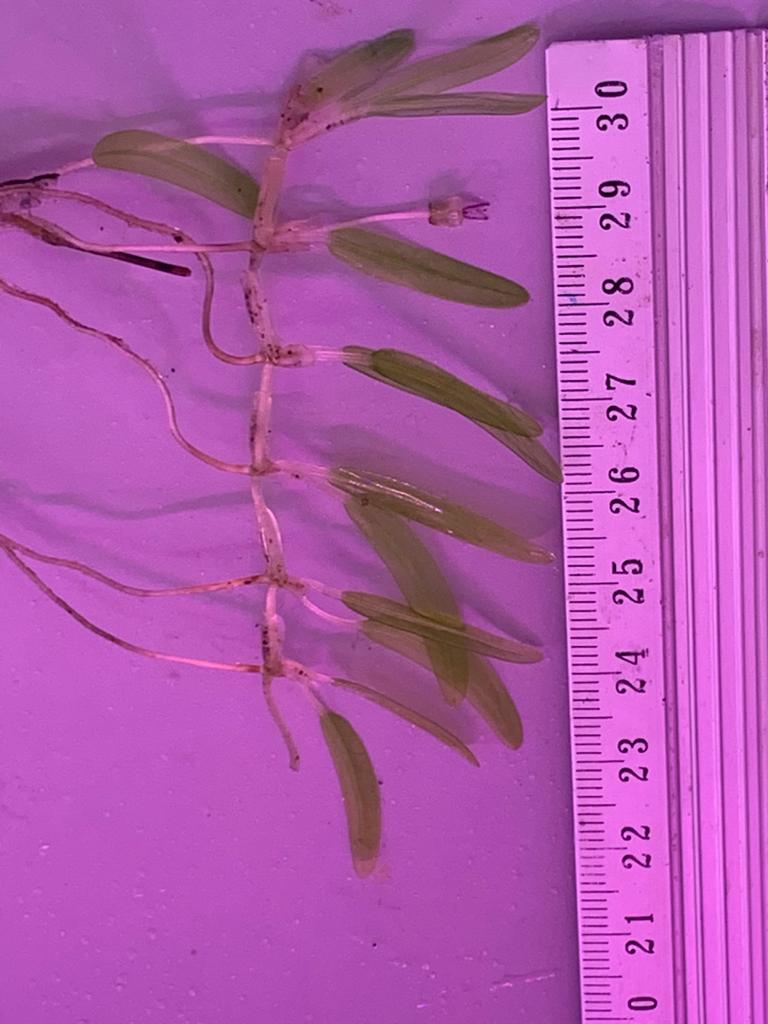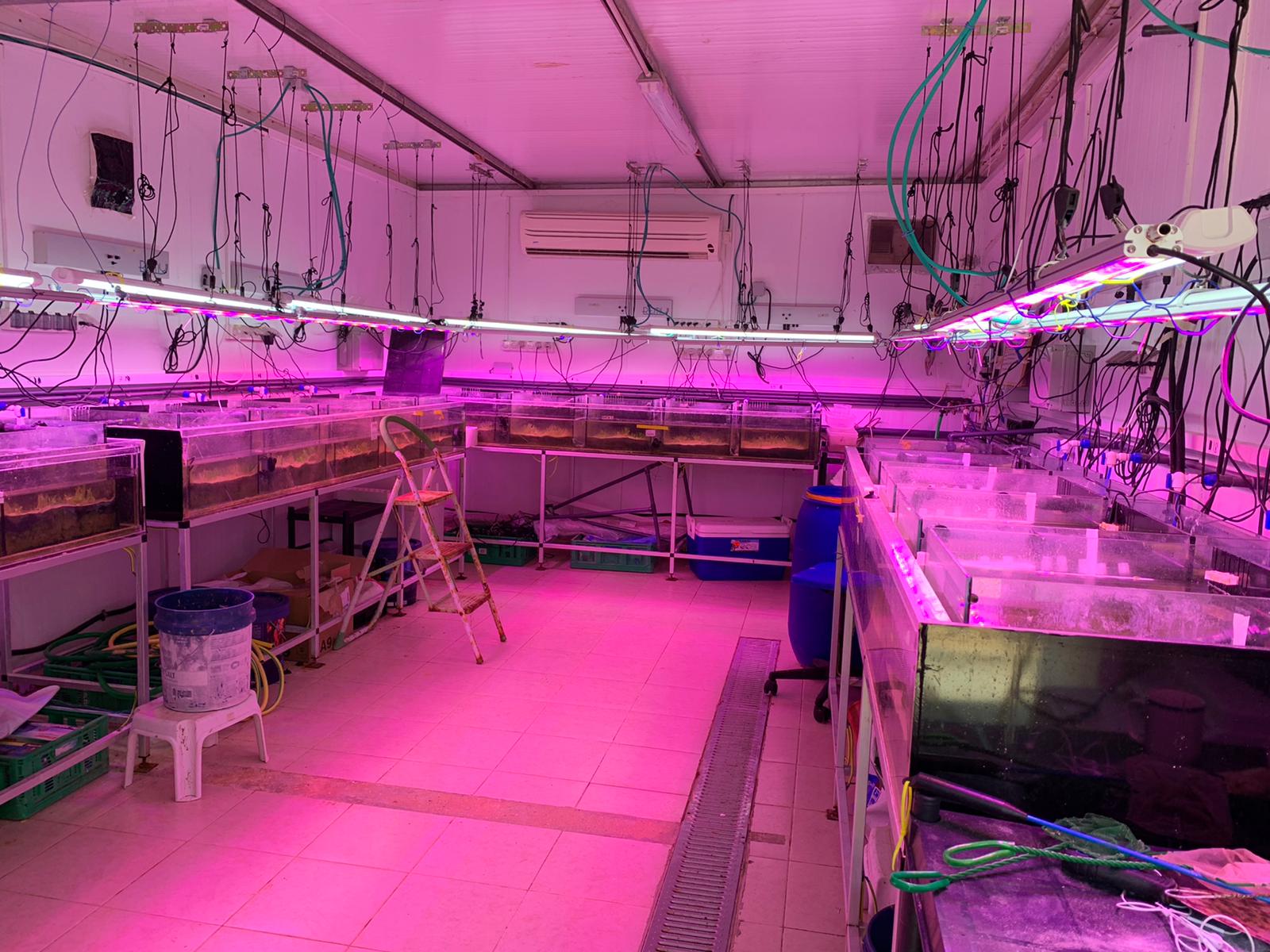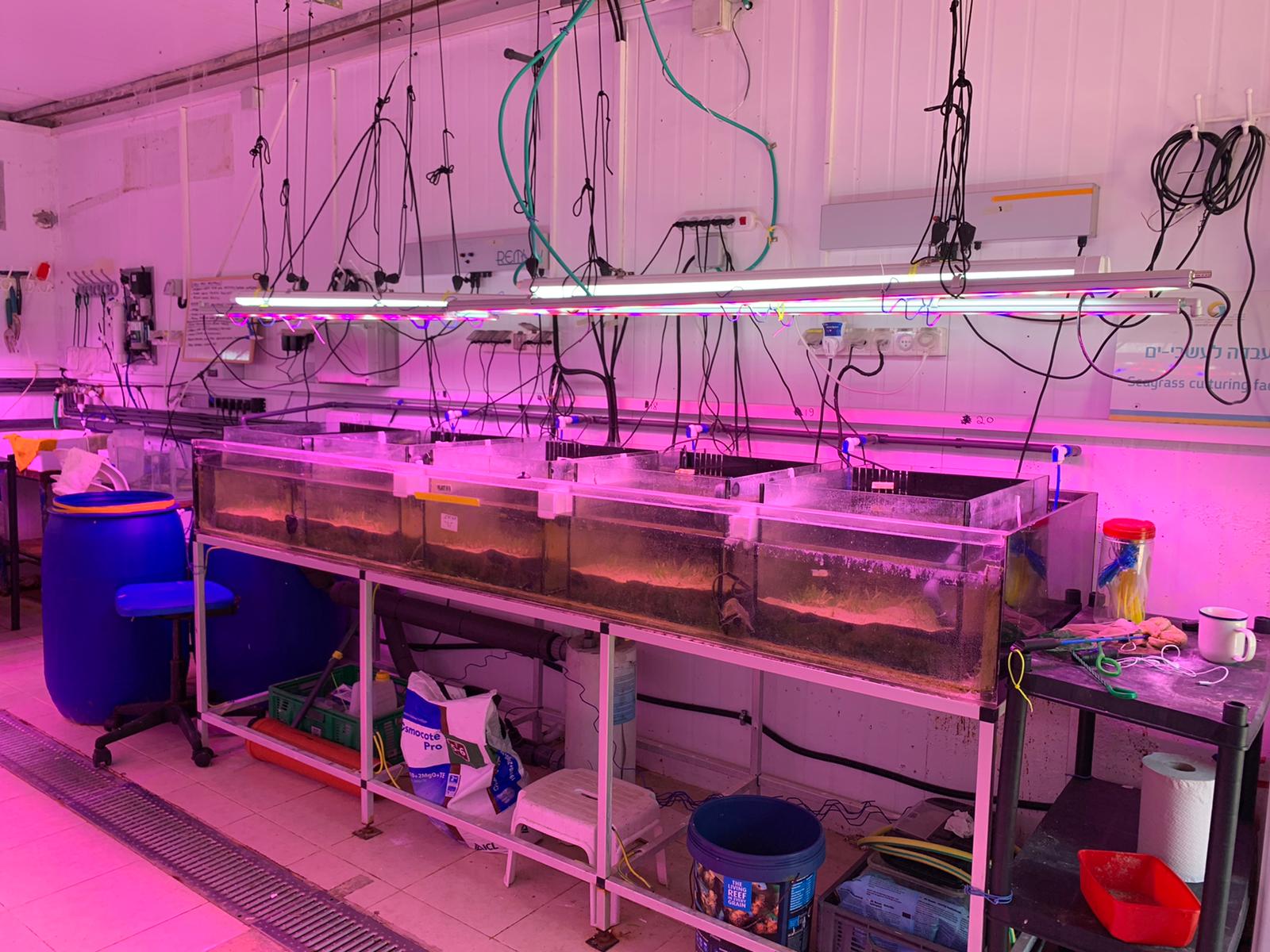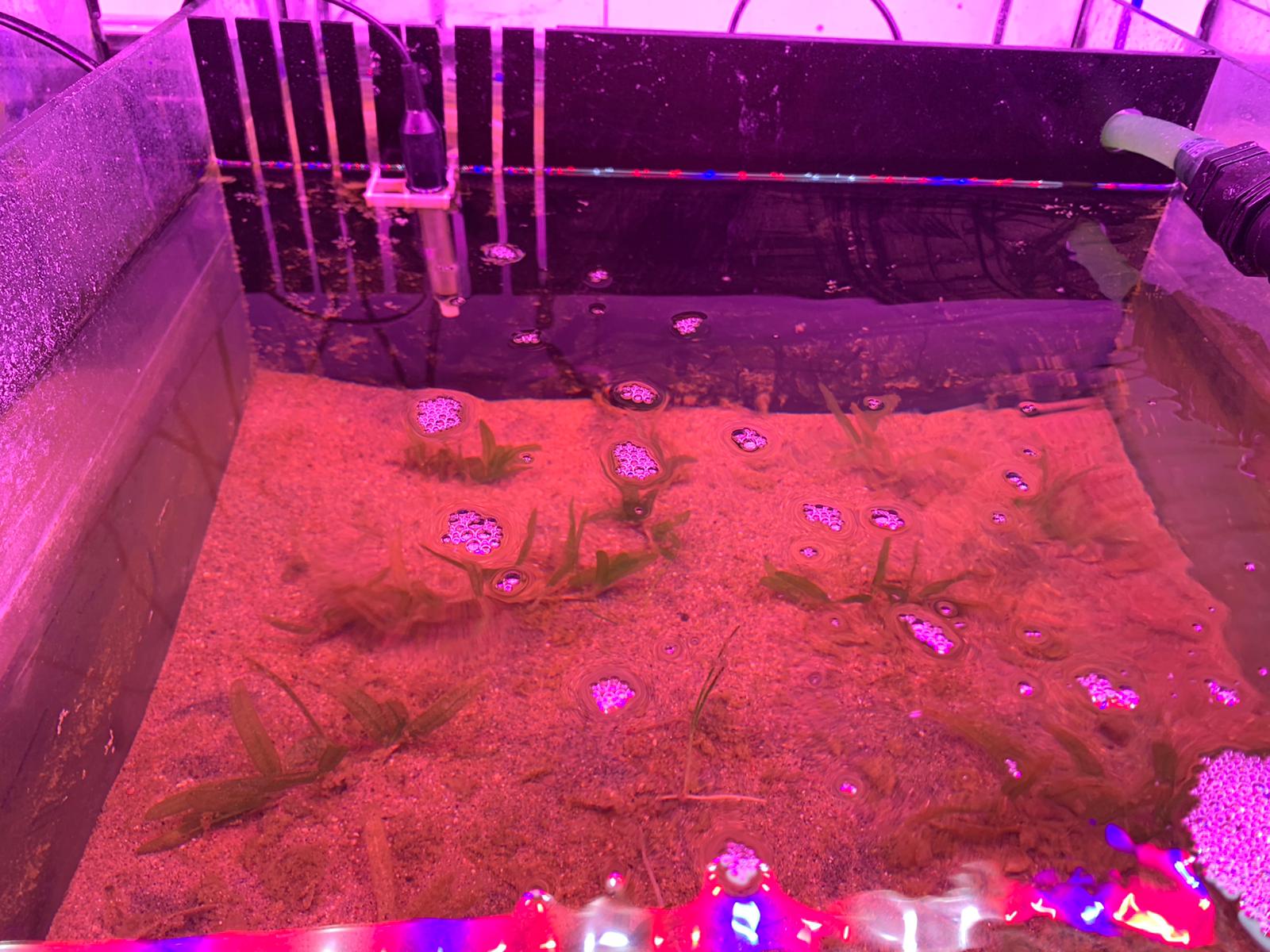Ecology – ADSSC
This department is part of ADSSC (The Dead Sea-Arava Science Center)
Effects of climate change on seagrasses
Using a dedicated seagrass mesocosm facility we can manipulate water temperatures and CO2 levels which allow us to perform multiple stress experiments related to climate change.
Realizing that little is known about seagrass communities in the Gulf of Eilat in the Red Sea, we have recently initiated efforts directed at creating a GIS layer of seagrasses in the northern Gulf of Eilat and following seasonal changes in their depth and geographical distributions.
We are looking at changes in biomass, pigment composition and the organisms associated with the meadows at two different sites. We were also part of a first timearticle in Hebrew that explained about seagrasses.
Acacia trees in the Arava
Like seagrasses that are considered key stone species in the shallow coastal areas, Acacia trees are considered key stone species in arid regions where they improve soil conditions for other plants and provide shelter and food for many desert animals. Indeed it is due to these services that loss of acacia trees entails not only loss of the biota associated with acacia trees themselves but also enhances soil erosion.
Realizing the importance of acacia trees to the region, we astablished acacia international conferences (Oct 2011, Oct 2015) called: Acacia in the Arava – past, present and future.
Currently we are studying the population genetics of Acacia tortillis from both sides of the arava (Israel and Jordan), work based on de novo microsatellites that we have recently developed (Winters et al. 2013). Understanding the genetic structure of acacia populations in the region could contribute to a more effective management of acacia trees in the Negev and the Arava. We are involved in monitoring the physiology (using PAM fluoromtery, dendrometers, NIR photography – amongst other techniques) of acacia trees in the region and in experiments looking at the ecophysiological responses of different acacia species and populations to water stress. Additional efforts are underway to try and estimate the biomass and age of acacia trees in the area.








